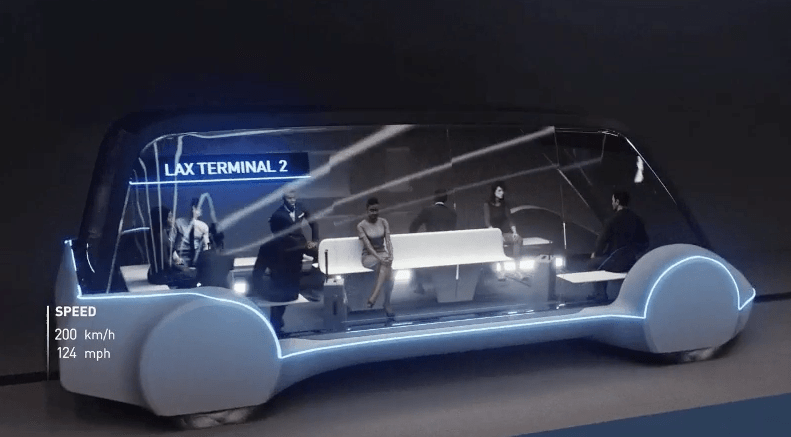The media finally got a tour of Elon Musk's plan to revolutionize transportation in Los Angeles — and it didn't go well for Musk.
On Tuesday night, Musk unveiled a 1.14-mile tunnel completed by his Boring Company, which runs under the city of Hawthorne, connecting the parking lot of Space X's headquarters to a vacant cabinet store. Laura Nelson at the LA Timeswrote:
Musk had promised modified “but fully autonomous” vehicles at the unveiling, but the reality was more modest: a Tesla Model X that reached a top speed of 53 mph, manually driven by an employee who previously drove in the Indianapolis 500. The trip through the tunnel took about two minutes, illuminated by the car’s headlights and a strip of blue neon lights tacked to the ceiling. The Model X rolled on two molded concrete shelves along the wall, which were so uneven in places that it felt like riding on a dirt road.
The Boring Company still insists the tunnel could become part of a network that will be filled with self-driving cars that will race people in groups through L.A. at speeds of up to 130 miles per hour.
But the company is also hedging. Earlier this week, it told Nelson that the tunnel is just an R&D for the Boring Company, which Musk says is aimed at revolutionizing the tunneling industry, one of the most complicated endeavors in civil engineering. It's probably good that the company has offered an alternative explanation for the tunneling, because the whole concept of developing an underground road network is flawed. Musk's tunnels are a lot like a subway, but with carrying capacity reduced to practically nothing.
Elizabeth Lopatto, a reporter with the tech publication, the Verge, wrote that Musk's original plans were very much like a subway. Musk said the tunnel would carry "pods" with 16-20 people. But reporters arrived to find out plans have apparently changed from a public transit system to a private system for rich drivers.
It does seem strange, though, that we’re taking this ride in a Model X — because until this evening, there were going to be “autonomous electric skates” that zip passengers around at 120 to 150 miles per hour. These skates were supposed to carry eight to 16 people in a pod or a single car. Unlike with a more conventional subway, these skates don’t stop between where a person gets on and where they might get off; every skate runs express to one’s final destination.
Anyway, the skates have been canceled. “The car is the skate,” Musk says.
The rollout was almost universally panned on social media and in the wider news media.
It's a Disneyland tram ride at best.
— Ring Toss: 3 Tickets (@raultherabbit) December 19, 2018
Some experts questioned whether the Boring Company had even succeeded at improving the cost of tunnel boring. Right now, it's not altogether clear that it did.
Nevertheless, Musk told the LA Times he plans to continue with a 3.5-mile tunnel between a Red Line transit station and Dodger Stadium. And he hopes to have the whole system built out in time for the Olympics in 2028.
But raising the money, building political support and receiving environmental permits would be a staggering undertaking, says Scott Frazier of LA Podcast. He noted that the Boring Company abandoned plansto build a tunnel through the Sepulveda Pass — which cuts through a mountain range between West L.A. and the San Fernando Valley — after learning it would be subject to a full environmental review process.
But even if the political and financial obstacles could be overcome, the biggest problem is the issue of access and geometry. L.A.'s highways are congested. Simply putting new ones underground doesn't really solve this problem.
Perhaps autonomous vehicles could travel up to 130 miles per hour in underground tunnels, but there's still a big problem: How to get all the cars down there.
Musk claims that self-driving cars will enter the tunnels via a special elevator inside a parking garage. But this design creates congestion at the front end while promising to relieve it on the journey. Drivers will need to line up to wait their turn on the elevator. If the tunnels were really able to deliver lightening fast commutes across Los Angeles, demand would likely be quite high.
One way to manage demand would be pricing. Musk has never explained what he would charge to use one of his private underground highways. But he would likely need to charge exorbitantly high rates to keep the tunnels and elevators flowing smoothly. A full build out of the concept could end up being a private uncontested highway system mirroring the congested public one for use only by a very rich few.
Hopefully, Tuesday's press event will put the whole idea to rest.






